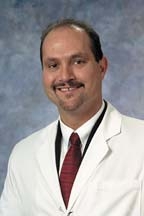
"There are a lot of smart people in the spine arena," says Frank Phillips, MD, co-founder of the Minimally Invasive Spine Institute at Rush in Chicago. "Listen to others and get their opinions and input about an innovative idea or concept. Be open to constructive criticism and then use it to move forward. At the same time, you also have to be prepared to stand up for what you believe in and be willing to fight for it."
"For me, it's really satisfying to come up with an idea or concept that meets a clinical need and truly has the potential to improve patient outcomes and quality of life," says Dr. Phillips. "Seeing the creative process through the product development cycle is really rewarding."
Here are the keys for staying on the cutting edge of innovation:
1. Keep up-to-date with innovation in the field. Differentiate innovation that has the potential to truly advance spinal care from marketing noise.
2. Avoid getting set in your ways and doing something the same way just because you always have; keep searching for better answers and be open minded.
3. Ask a lot of questions, and keep searching for answers.
4. The operating room affords a unique opportunity to work with technologies and evaluate the advantages and shortcomings.
5. Build strong relationships with engineers, big and small device companies and other innovative surgeons. They can all help.
"The truth is, innovation seldom happens in isolation," says Dr. Phillips. "Even if the surgeon is creative or innovative, it's extremely challenging to develop a product in a vacuum. With our real 'day jobs,' we often don't have the time, resources or skill-set to do it all on our own and are often best served by collaborations."
Dr. Phillips has relationships with senior-level executives at large and small device companies. He connects with them when a new idea might fit their platforms. He also has relationships with potential investors and experts to help commercialize a new device.
"All of those people can help with innovation and provide strategic guidance about where the product is going, what clinical need it meets and how it can translate into a commercial product at the end of the day," says Dr. Phillips.
"Unfortunately, there are a lot of companies that have formed over the last decade that aren't committed to innovation, just 'me too' products that a relatively small number of surgeon clients use," says Dr. Phillips. "Those companies are driven by commercial success for a small number of shareholders instead of having a mission of improving patient outcomes. Those types of companies consume a lot of resources but aren't adding value or innovation. They are a distraction to the real mission of advancing spine care."
"For me, I don't think the widget is as important as the philosophy behind it," says Dr. Phillips. "I think we'll see more technologies developed around a specific condition or disease state that improve surgical reliability leading to predictably good outcomes in the hands of all spine surgeons. It's like LASIK for eye surgery; the technology is embedded in the machine thereby all but removing surgeon variability and reliably achieving excellent outcomes. In the end, innovation should be guided by safety, predictability and reproducibility."
The best types of project to focus on include:
1. Conditions that currently are not well treated
2. Procedures with high complication rates
3. Technology to enhance predictability
4. Minimizing collateral damage to structures around the spine
5. Enhancing the ability to perform more complex spine procedures in the outpatient setting.
6. Improving spinal diagnostics
"Innovation is becoming more than just developing a cage or screw — it's becoming about the whole procedure and delivering care specifically for each individual patient," says Dr. Phillips. "It's also about changing how the care is delivered. We are moving to more personalized care in patient friendly environments such as outpatient surgical centers. This move requires less-invasive techniques, enhanced perioperative pain management and an emphasis on efficiency and value."


